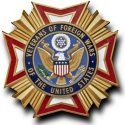The American flag has a long history, and the members of our organization have spent nearly as long defending and honoring our nation’s most iconic symbol of freedom. Whether you’re looking for the historic details of how the U.S. flag came to be, or the rules and regulations that encompass her daily flight, we’re here to ensure you can find the information you need.
Displaying the Flag
On Same Staff
U.S. flag at peak, above any other flag.
Grouped
U.S. flag goes to its own right. Flags of other nations are flown at same height.
Marching
U.S. flag to marchers right (observer’s left).
On Speaker’s Platform
When displayed with a speaker’s platform, it must be above and behind the speaker. If mounted on a staff it is on the speaker’s right.
Decoration
Never use the flag for decoration. Use bunting with the blue on top, then white, then red.
Salute
All persons present in uniform should render the military salute. Members of the armed forces and veterans who are present but not in uniform may render the military salute. All other persons present should face the flag and stand at attention with their right hand over the heart, or if applicable, remove their headdress with their right hand and hold it at the left shoulder, the hand being over the heart.
Over a Street Union (stars) face north or east depending on the direction of the street.
Half Staff
On special days, the flag may be flown at half-staff. On Memorial Day it is flown at half-staff until noon and then raised.
Special Rules
Do not let the flag touch the ground.
Do not fly flag upside down unless there is an emergency.
Do not carry the flag flat, or carry things in it.
Do not use the flag as clothing.
Do not store the flag where it can get dirty.
Do not use it as a cover.
Do not fasten it or tie it back. Always allow it to fall free.
Do not draw on, or otherwise mark the flag.
